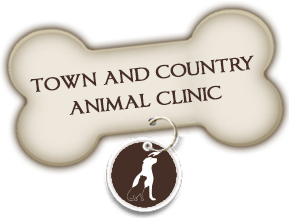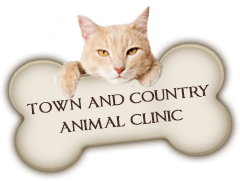We have previously discussed the different stages of Dental Disease, how it occurs, how it affects your pet and their overall health and also how to prevent it. Below are those previous blogs if you would like to refresh your memory.
Dental Disease in Dogs and Cats:
https://www.townandcountryanimalclinic.ca/2012/11/15/dental-disease-in-dogs-and-cats/
How To Give Your Pet A Celebrity White Smile:
https://www.townandcountryanimalclinic.ca/2012/11/20/how-to-give-your-pet-a-celebrity-white-smile/
Usually when your pet has tartar accumulation, brushing their teeth or using oral chews are not enough to remove the calcified plaque from the tooth. These are good options to help prevent the plaque and tartar from building up in the future, but once it is present a Professional Dental Cleaning is required to remove the tartar present in your pet’s mouth. Unlike when we have our teeth cleaned, animals require a general anesthetic to perform the procedure properly. When we examine the mouth of an awake animal, we are limited to visually seeing the accumulation of tartar, recession of the gums, discoloured teeth and obvious fractured teeth. In order to properly assess each tooth we first must remove the tartar build up to be able to asses if the tooth has mobility, measure all sides of the tooth to ensure there is no periodontal pocket, the grade of gingivitis, if there is any gum recession and if there are any lesions or fractures present on the tooth. This assessment is done on each individual tooth and most animals would not allow you in their mouth to perform that proper assessment on each tooth.
When an animal is placed under anesthesia, we can not only properly asses each tooth, we can then perform the proper cleaning using an ultrasonic scaler, hand scalers, polishing pastes, fluoride treatment and probing the teeth. The ultrasonic scaler is the same instrument used at your human dental office to clean your teeth. This instrument works by vibrating in an ultrasonic range to remove calculus from the tooth surface. Hand scalers are then used to remove any plaque or tartar that is built up under the gum line. Next we use a periodontal probe to acquire a measurement and depth if there is a periodontal pocket present. Once the entire tooth has been assessed and determined it is healthy enough to remain, we then use a polisher to apply a paste to help fill in the scratches and etches created when removing the tartar from the teeth. Lastly we apply a fluoride rinse to the mouth. This process will allow your pet to have a celebrity white smile and a fresh start to their dental health.
In order to properly clean each tooth a general anesthetic is required. This is administered through a sedative injection to allow for a stress free induction. Next is an induction anesthetic to allow a tube to be placed in the pet’s mouth so the anesthetic machine can breath for them. Once they are placed on the anesthetic machine they are supplied with a constant stream of oxygen and gas anesthetic allowing them to stay comfortable asleep while we work in their mouth. Every animal is placed on a monitor that constantly displays their heart rate, blood pressure, oxygen saturation, temperature and respiratory rate. These stats allow us to properly maintain a safe and comfortable level of anesthesia for your cat or dog.
The additional cost compared to a human dental cleaning is the general anesthetic that is required. We also must take into consideration that an animal has their teeth cleaned on a bi-annual basis where as humans have their teeth cleaned annually. The routine maintenance that is performed on humans allows for a simpler and faster cleaning as compared to animals. So when we consider the time it takes to perform a professional dental cleaning and the general anesthetic that is the difference in cost. The breakdown for the additional cost comes with everything needed for the anesthetic. The first thing we recommend before the anesthetic is pre-anesthetic blood work. This is blood work to check and ensure your pet’s kidneys, liver and pancrease are working properly to ensure they can properly filter the anesthetic out of their body. This allows us to identify possible issues with the internal organs before they are displaying any symptoms or issues. If there are any abnormalities that are found from the blood work, we will postpone the dental cleaning and address the abnormality first. We also have the additional cost of the drugs to perform the anesthesia , the time for the procedure and the monitoring.
Some people are worried that their pet is too old to have a general anesthetic. Modern anesthetics including the pre-anesthetic blood work and the arrangements of sedatives, the induction anesthetic, the gas anesthetic as well as pain medications allow for a safe procedure even for an older dog or cat. Also the monitors we use allows us to identify any abnormalities and initiate therapy to avoid anesthesia problems.
Once we have performed the Professional Dental Cleaning on your dog or cat, this is when the at home maintenance can help prolong the next professional cleaning. We recommend brushing your pet’s teeth a minimum of 3 to 4 times per week. Dental diets such as the Hill’s Prescription t/d for your cat (http://www.hillspet.ca/en-ca/en-ca/products/pd-feline-feline-td-dry-dry.html) or your dog (http://www.hillspet.ca/en-ca/en-ca/products/pd-canine-canine-td-dry-dry.html) or the Royal Canin Dental Diet (http://www.royalcanin.ca/index.php/Veterinary-Products/Canine-Nutrition/Veterinary-Care-Nutrition/Dental-Dry) to help keep your pet’s teeth clean. Also oral dental chews and rinses will prevent the plaque accumulation now that the tartar has been removed from your pet’s teeth.
Your pet’s oral health should be assessed by a veterinarian at least once a year. If you notice that your pet is exhibiting symptoms such as bad breath, tartar buildup, inflamed gums, difficulty chewing, or pawing at the mouth, contact us for an appointment right away. A complete blood analysis and comprehensive exam can detect the presence of dental disease. Give your pet a happy, healthy smile!







